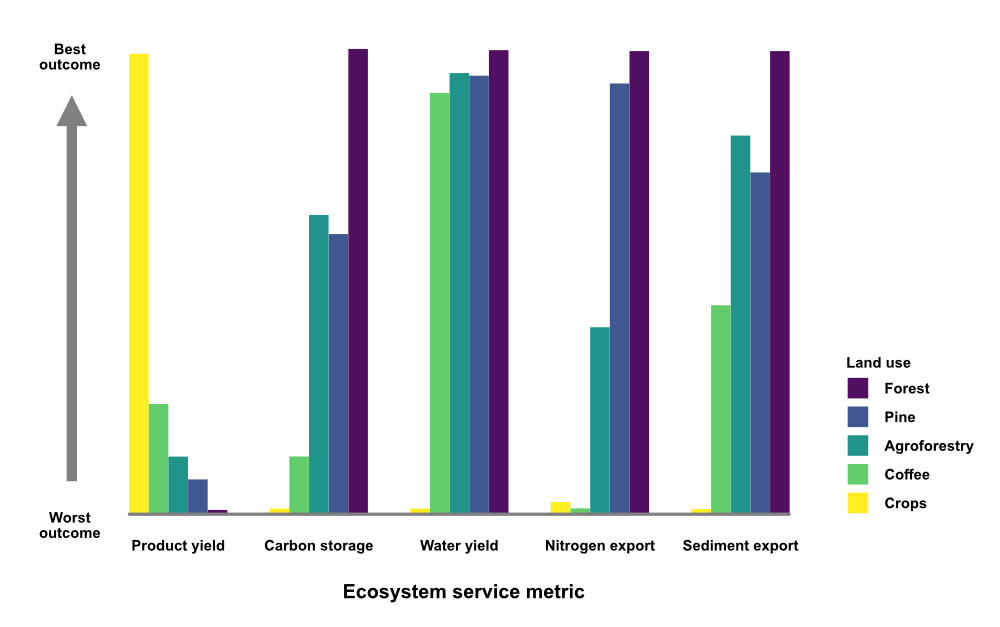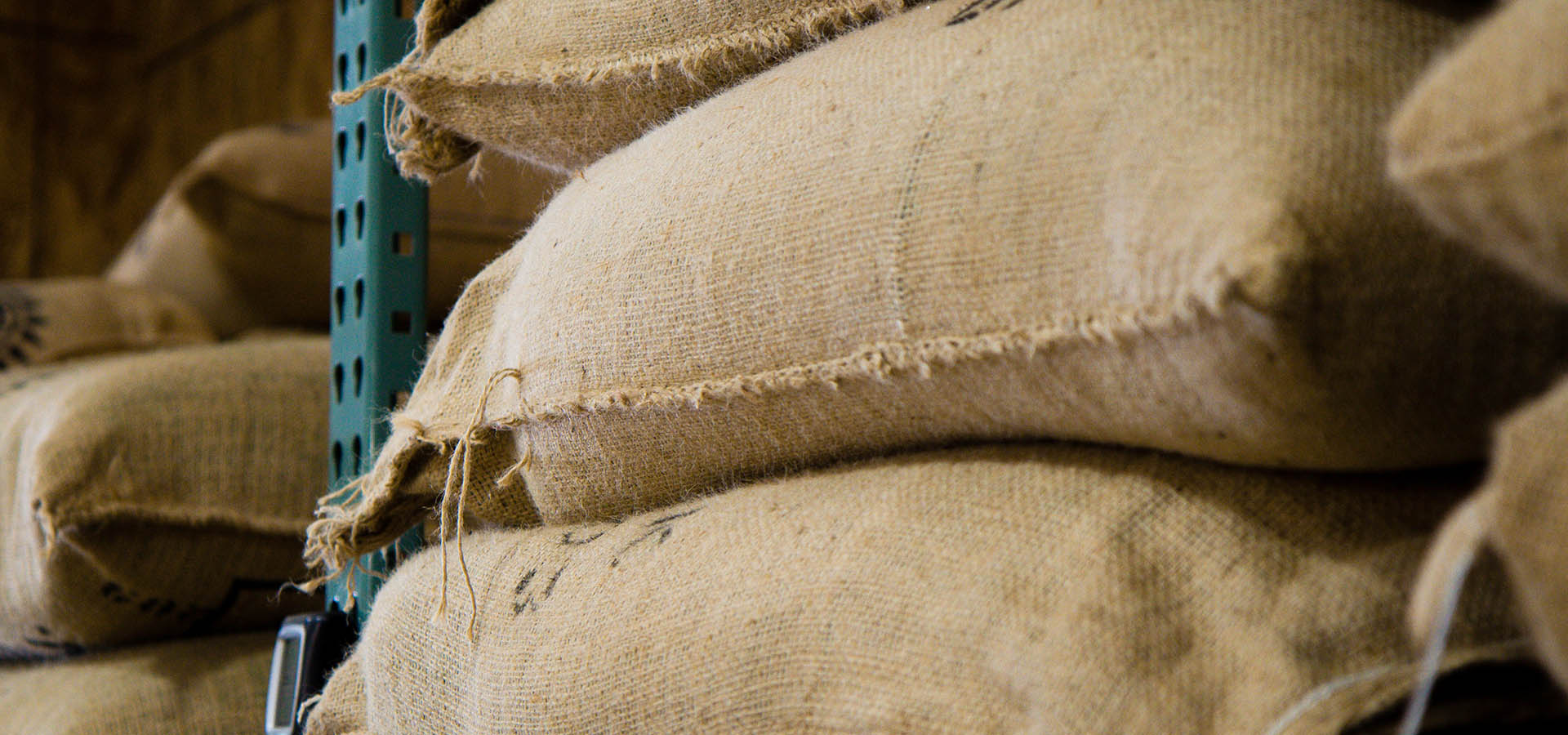To explore the environmental and socio-economic impacts of coffee agroforestry we are utilising two modelling approaches: InVEST (Integrated Valuation of Ecosystem Services and Tradeoffs) and CAF2014-NPV.
InVEST
We have used the InVEST model to explore wider, landscape scale impacts of converting the government designated plantation zone within the Upper Brantas watershed (the Brantas River is the major river system in this area) into one of five land uses:
- secondary native forest
- pine monoculture
- pine-coffee agroforestry
- sun coffee (coffee monoculture)
- annual root crop.
The modelling (see figure below) showed that pine-coffee agroforestry provides a middle ground, balancing negative impacts on the environment (ecosystem services) whilst maintaining crop production and thus income for smallholder farmers.

Result of InVEST modelling. The most favourable and least favourable scenario for each of five ecosystem services are shown.
CAF2014-NPV
This modelling approach combines two models; a coffee yield model (CAF2014) with an economic formula (Net Present Value (NPV)) to assess the impact and relative value of different management choices.
The approach incorporates climate data, plant measurements and direct economic factors like changes in coffee yield, labour cost, and agricultural inputs. It draws on data from the experimental platform, including information from the local farmers. Through this modelling, we aim to inform farmers and UB Forest managers about the mid- to long-term trade-offs and benefits associated with different management options.
